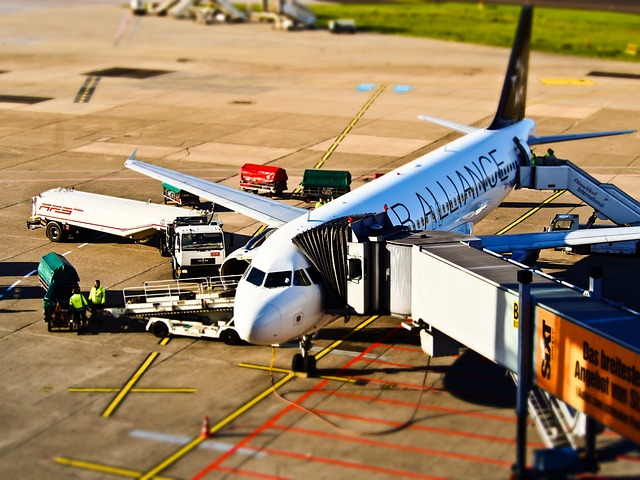Using mobility tech to streamline booking, routing, and check-ins
Modern mobility technology connects booking, routing, and check-in processes to reduce friction across journeys. From integrated apps that merge transit and airport options to real-time luggage visibility, these tools aim to make itineraries more predictable and commutes more efficient for both passengers and operators.

Using mobility tech to streamline booking, routing, and check-ins
Mobility technology is reshaping how travelers plan and execute trips by combining data, connectivity, and automation into coherent user experiences. Rather than treating booking, routing, and check-ins as separate tasks, platforms now synchronize schedules, passenger details, and vehicle or flight status to reduce waiting times and uncertainty. This approach supports smoother commutes, clearer itineraries, and better resource use across transit and airport environments.
Mobility and connectivity in modern travel
Connectivity underpins seamless mobility: APIs, cellular networks, and IoT devices let apps exchange live updates about vehicles, terminals, and luggage. When systems share status information—such as traffic congestion, gate changes, or platform assignments—passengers receive actionable alerts that adjust itineraries in real time. For operators, improved connectivity enables better fleet coordination and more flexible routing, reducing idle time and improving overall transit reliability.
How booking platforms shape itineraries
Booking systems now aggregate multimodal options—rideshare, bus, rail, and air—so users can create end-to-end itineraries within a single interface. These platforms factor in transfer windows and typical layover durations to recommend combinations that minimize missed connections. Integration with passenger profiles and payment methods simplifies reservations and can automatically populate check-in data for carriers, cutting repetitive tasks and streamlining the boarding process.
These booking platforms increasingly include price and timing filters, allowing travelers to balance convenience against duration. By combining historical performance data with live feeds, itinerary suggestions become more context-aware, adapting choices when disruptions occur to present alternative routes or adjusted schedules.
Routing and commute optimization
Advanced routing uses machine learning and traffic models to suggest optimal paths for both private vehicles and public transit. For commuters, dynamic routing can reroute trips around incidents or severe delays and adjust expected arrival times in shared calendars. For transit operators, route optimization improves vehicle utilization and reduces bottlenecks by reassigning vehicles or adjusting headways based on demand forecasts and real-time passenger flows.
Routing logic increasingly considers multimodal transfers: the ideal path may combine a short rideshare leg with a high-frequency bus, for example. The goal is to shorten total door-to-door time rather than just individual segments, improving the overall commute experience.
Streamlining check-ins at airport and transit hubs
Digital check-ins and mobile boarding passes reduce queueing at counters and kiosks, while biometric and contactless technologies can speed identity verification. When check-in systems link with booking platforms, passenger data flows directly to carriers and security checkpoints, enabling smoother processing and fewer manual interventions. For transit hubs, coordinated check-in systems allow staff to manage crowding and predict peak processing needs.
Systems that sync gate changes and departure times with passenger devices can push timely reminders about when to move between terminals or when to allow extra time for security. The net effect is fewer missed departures and more predictable passenger throughput through airport and transit checkpoints.
Luggage handling and layovers
Luggage tracking solutions that use RFID or GPS help passengers and operators monitor baggage movements across multimodal journeys. Real-time luggage visibility reduces uncertainty during layovers and simplifies recovery when items are delayed. When combined with itinerary data, baggage systems can prioritize routing for luggage on tight connections to reduce instances of misrouted bags.
During layovers, connected services can suggest optimized transfer routes through terminals, recommend time buffers for customs or security, and surface services like baggage storage or lounge access to improve passenger comfort and reduce stress during waits.
Logistics, sustainability, and system-wide efficiency
Applying mobility tech to logistics helps reduce empty trips and improve load planning, which benefits sustainability by lowering emissions per passenger or per parcel. Data-driven scheduling, shared mobility options, and coordinated routing contribute to fewer vehicles on the road and improved energy efficiency across networks. For transit agencies and airports, these efficiencies translate to better resource allocation and lower operational waste.
Sustainability gains also arise from encouraging modal shifts—facilitating combined transit and micro-mobility legs can replace car trips for last-mile travel. By measuring emissions and integrating sustainability metrics into route planning tools, operators and travelers can make informed choices that align with environmental goals.
Conclusion
Integrating booking, routing, and check-in through mobility technology reduces friction across the travel chain by improving data flow and operational coordination. The result is more reliable itineraries, enhanced passenger experiences during commutes and layovers, and efficiency gains for transit and logistics providers. As connectivity and analytics improve, these systems will continue to refine how journeys are planned and executed, with attention to both convenience and sustainability.





